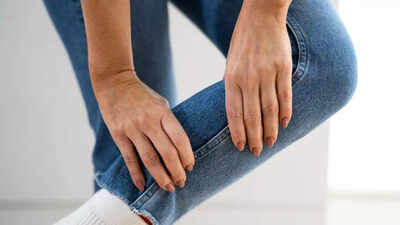Kidney health and Restless Legs Syndrome explained: Symptoms, causes, and cure

A recent study has identified chronic kidney disease (CKD) patients—especially those undergoing dialysis—as a group at significantly higher risk of developing Restless Legs Syndrome (RLS). The research highlights that RLS symptoms are highly prevalent in this population and are closely associated with iron deficiency, a condition frequently seen in CKD due to chronic inflammation, poor dietary intake, and blood loss.A 2016 meta-analysis found that nearly one in four CKD patients experiences RLS, with higher rates among those on hemodialysis. Further, brain imaging and cerebrospinal fluid studies have shown lower iron concentrations in certain areas in RLS patients, suggesting that central, rather than peripheral, iron deficiency is more relevant to symptom development. In CKD, this imbalance is often worsened by dialysis-related blood loss and systemic inflammation.The study further noted that CKD patients with RLS had lower levels of serum ferritin, transferrin saturation, and serum iron, along with elevated TIBC, pointing to both absolute and functional iron deficiency. These findings underscore the importance of early detection and iron-targeted therapy in managing RLS symptoms and improving overall quality of life in CKD patients.
What is Restless Legs Syndrome (RLS)?
Restless Legs Syndrome—also called Willis-Ekbom Disease—is a neurological and sensory condition characterized by an uncontrollable urge to move the legs. It typically occurs during periods of rest or inactivity, especially in the evening or at night, making it a sleep-disrupting disorder.

The condition tends to worsen in the evening and improves with movement. People often describe the sensations as aching, itching, throbbing, crawling, or pulling in the legs. Though it mostly affects the legs, it can occasionally impact the arms too.
Signs and symptoms of RLS
RLS symptoms can range from mild to severe and vary from person to person. Some of its key features include:Discomfort after resting: Symptoms typically start when you’re sitting or lying down for long periods, for example during a long drive, or while watching a move in a theatre.Relief with movement: Stretching, pacing, or leg simple movement helps temporarily improve the symptoms.Worse at night: Many experience trouble falling or staying asleep.Night time twitching: RLS may be associated with another, more common condition called periodic limb movement of sleep, wherein the legs twitch and kick during sleep, possibly throughout the night.Impact on mood and focus: Chronic fatigue, depression, and difficulty concentrating are common.In severe cases, RLS symptoms occur more than twice a week and can interfere with work, social life, and mental health.
What causes RLS?

Often, there’s no known cause for restless legs syndrome. However several contributing factors have been identified. Genetics appear to play a role, as RLS often runs in families. One of the most significant medical links is iron deficiency, especially low levels of iron in the brain, which interferes with dopamine production—an essential chemical for smooth muscle control.RLS is also frequently seen in people with chronic illnesses such as diabetes, kidney disease, and peripheral neuropathy. Additionally, problems in the brain’s dopamine pathways, similar to those seen in Parkinson’s disease, have been associated with RLS.
Managing RLS: What helps?
Currently there is no cure for RLS but its symptoms can often be managed with the right combination of treatment and lifestyle adjustments. The first step towards tackling the issue is to address and acknowledge underlying conditions like iron deficiency, diabetes, or sleep apnea. People with RLS are often advised to avoid or limit their intake of caffeine, alcohol, and nicotine, especially in the evening.In order to reduce the nighttime symptoms, it has been observed that Creating a regular sleep routine and maintaining a calming bedtime environment has a positive effect on the body. Further, warm baths, leg massages, or the use of heating pads and ice packs also give relief. Some devices like vibration pads or specially designed foot wraps that apply gentle pressure have also proved to provide temporary relief.







